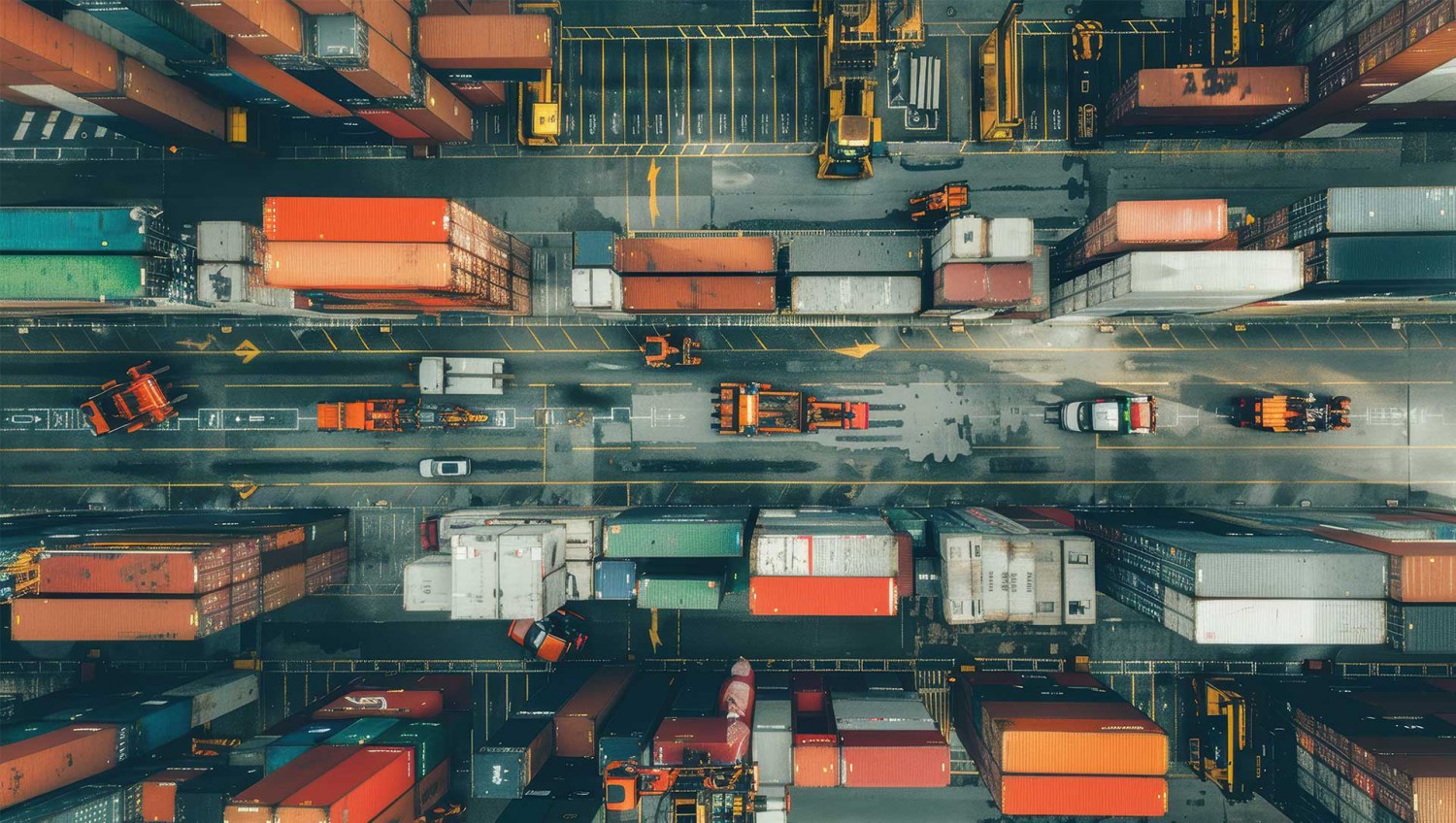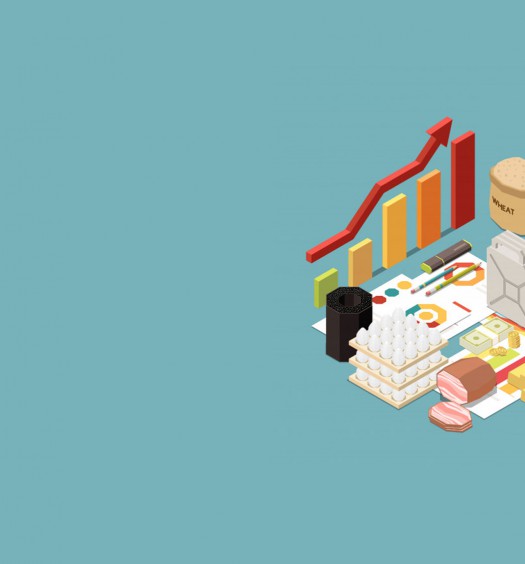After so much commotion, the second half of April seemed almost calm - at least on the international trade front. One might think Donald Trump was focused on improving his golf handicap at Mar-a-Lago (though in reality, he was celebrating his “Hundred Days” in office and even made a trip to Rome for Pope Francis’s funeral, followed by an impromptu meeting with Volodymyr Zelensky). The Trumpian front has shifted back to the United States, with a full-blown offensive against universities and continued efforts to undermine the Department of Government Ethics (DOGE) at the core of federal administrations and agencies.
Trump had to tone down his ambitions to dismiss Federal Reserve Chair Jerome Powell, as his constitutional authority appears to have hit its limits. It’s worth noting that he already has enough trouble managing his own team: he had to part ways with his National Security Advisor, Mike Waltz, and his Defense Secretary, Pete Hegseth, keeps making blunders. On top of that, Elon Musk has announced he will leave the DOGE in May.
Internationally, Netanyahu continues to act with impunity in Gaza, much like Putin in Ukraine. At least on the latter front, the U.S. position seems to have shifted. A “mining” agreement was signed with Ukraine – a move that appears largely symbolic, even surreal, given the ongoing war. Then there’s the issue of tariffs. After the abrupt reversal on April 9, the U.S. has gradually softened its stance, expanding exemptions for Chinese electronics and auto parts, and providing some clarity on measures affecting Chinese-built ships stopping in U.S. ports. Beyond that, negotiations have apparently begun with countries most likely to yield under pressure, such as Japan.
So, there’s little triumphant or concrete to mark Trump’s hundred days in office – aside from the U.S. economy’s contraction in the first quarter of 2025 (estimated between -0.3% and -1.5%), dragged down by precautionary import surges before “Liberation Day” (which The Economist cheekily dubbed “Ruination Day”) and March’s staggering trade deficit of $162 billion.
The dominant theme now is uncertainty – and nothing is worse for the markets. The absurd evidence of this is the price of gold, with the ounce continually breaking records, now above $3,500. The biggest uncertainty concerns future U.S.-China relations: tariffs stand at 145% on one side, 125% on the other, with no further escalation for three weeks now – a veritable eternity! Everyone knows this situation can’t last, but while China still has room to maneuver, the U.S. has alienated many of its would-be allies – starting with Canada, which just gave Mark Carney a hero’s welcome.
There’s a real risk that Xi Jinping might seize this moment to advance his strategy toward Taiwan. And speaking of Taiwan, a great way to get a glimpse of the island is through Régis Wargnier’s newly released film La Réparation.
Donald Trump has effectively added another 90 days to his initial hundred. In the meantime, we can expect a flurry of new executive orders and persistent uncertainty across all fronts.
One front to watch closely is oil. Between the negative impact of Trump’s tariff policies on global demand and OPEC+’s decision to significantly open the taps (increasing output by 411,000 barrels per day for two consecutive months), oil prices are likely to continue falling – potentially down to $50 a barrel in the U.S. (WTI), well below the break-even point for American shale oil, which stands at $65. While this drop is good news for inflation, it’s bad news for Texas, a key Republican stronghold. The strategies of Saudi Arabia and Russia remain harder to decipher – for now, it’s a situation to watch.
Finally, a word on a largely forgotten conflict – arguably one of the most brutal: Sudan. Sudan is by far the world’s leading producer of gum arabic, a resin from the acacia tree used as a food additive, especially in soft drinks. Fiercely coveted by warring factions, gum arabic – whose price has soared – has become bitter for the local populations who once depended on it for their livelihood. The curse of natural resources truly knows no bounds.
This is an excerpt from the monthly summary published by Cercle CyclOpe. The full version, spanning 150 pages, is available by subscription. For more information, please contact us at cyclope@ampersandworld.ch
Market brief, May 2025
Energy
❚ The Russian Ministry of Economy is forecasting an average Brent crude oil price of $68 per barrel in 2025. The price of Urals crude is expected to be around $56, which is below the $60 threshold set by international sanctions. In ruble terms, this represents a 21.5% drop. It is estimated that Russia needs a Brent price of $70 per barrel to balance its budget.
❚ The International Energy Agency (IEA) has revised down its global oil demand growth forecast for 2025, now projecting an increase of only 730,000 barrels per day, followed by 690,000 barrels per day in 2026. On the other hand, non-OPEC+ supply is expected to grow by 1.3 million barrels per day, with 490,000 barrels per day coming from the United States.
Meanwhile, OPEC is projecting higher demand growth, anticipating an increase of 1.3 million barrels per day in 2025 and 1.28 million barrels per day in 2026.
❚ The U.S. Energy Information Administration (EIA) forecasts that U.S. oil production will peak at 14 million barrels per day (mbpd) in 2027 before declining to 11.3 mbpd by 2050. Shale oil production is also expected to peak in 2027 at 10 mbpd. The EIA projects an average Brent crude price of $67.87 per barrel in 2025, and $63.88 for WTI. According to a study by the Dallas Fed, the average profitability threshold is around $65. Rystad Energy and Wood Mackenzie estimate the breakeven cost of a new well at $48 – rising to $60 when financial and overhead costs are included. Breakeven prices range from under $40 in the Permian Basin to $57 in North Dakota.
❚ Kazakhstan is reportedly on the verge of leaving OPEC+ after refusing to comply with its production quota. In March, it produced 1.85 mbpd despite a quota of 1.468 mbpd. During the first two weeks of April, production fell by 3%, mainly due to Russia limiting pipeline activity for “maintenance.”
❚ The EIA expects U.S. LNG exports to rise to 15.2 billion cubic feet per day (bcfd), up from 11.9 bcfd in 2024. In Q1, the U.S. exported 34.6 million tonnes (mt) of LNG, 77% of which went to Europe.
❚ China has eliminated its 125% tariff on U.S. ethane imports, a by-product of shale gas. China purchases about half of all U.S. ethane exports (492,000 barrels per day in 2024). Ethane is primarily used in petrochemicals.
❚ At the end of April, as the U.S. tied its record for LNG exports (9.3 mt), prices remained firm: $11.48/mmbtu in Europe and $12.23 in Asia. With U.S. prices at $3.43/mmbtu at the Henry Hub, exporters enjoy a healthy margin.
❚ In March, China imported 12.11 mbpd of crude oil and refined 14.85 mbpd. With domestic production at 4.48 mbpd, the surplus (directed to strategic reserves) amounted to 1.74 mbpd. China also imported 1.71 mbpd from Iran.
❚ Since February 6, when an LNG tanker from Corpus Christi arrived in Fujian, China has not imported any further U.S. LNG.
❚ Tensions are clearly rising within OPEC+. As a way to penalize “cheaters,” a new output increase of 411,000 barrels per day has been announced for June, with another likely to follow in July. The ultimate goal appears to be the full reversal – by November – of the 2.2 mbpd in voluntary cuts. The main culprits: Kazakhstan and Iraq.
Metals
❚ According to the Silver Institute, the global silver market is expected to post a deficit in 2025, though a relatively modest one – 117 million ounces. Demand is forecast to decline by 1%, mainly due to a drop in jewelry consumption, while supply is expected to rise by 2%.
❚ As part of its retaliatory measures against U.S. tariffs, China has added rare earth elements to its list of potentially restricted exports. These include samarium, gadolinium, terbium, dysprosium, lutetium, scandium, and yttrium.
❚ Donald Trump has revived the long-standing idea of deep-sea mining, particularly targeting polymetallic nodules. The U.S. administration claims there are 1 billion tons of nodules within American waters, potentially exploitable under the 1980 Deep Seabed Hard Minerals Resources Act, which has never been used due to lack of profitability. There is even talk of creating a strategic nodule reserve.
❚ China appears to be nearing its aluminum production peak. In Q1 2025, production was running at an annualized rate of 44 million tonnes (mt), just under the 45 mt cap set in 2017. China is now shifting toward greener production, relying on hydropower in Yunnan, renewables in Inner Mongolia, and recycling, with a goal of 15 mt of recycled aluminum by 2027.
❚ A “mining agreement” has been signed between the United States and Ukraine. It creates a joint investment fundaimed at Ukraine’s reconstruction. Ukraine will incur no debt toward the U.S. and will retain oversight rights on mining projects.
❚ The International Copper Study Group (ICSG) forecasts a global copper surplus of 500,000 tonnes in both 2025 and 2026, following a 138,000-tonne surplus in 2024. Global demand is expected to rise 2.4% in 2025 and 1.8% in 2026.
❚ Indonesia has decided to raise export royalties on metals. Nickel is most affected, with rates rising from 10% to a variable tax between 14% and 19%.
❚ The U.S. is threatening an embargo on copper waste exports, which would especially hurt China, the main recipient. In 2024, the U.S. exported 960,000 tonnes of copper waste, half of which went to China.
❚ On April 12, the UK Parliament met in an emergency Saturday session and passed the Steel Industry Bill (Special Measures), allowing the government to take control of British Steel and continue operating the country’s last blast furnaces.
❚ Pakistan is also trying to win favor with the U.S. by promoting its mineral resources. One key project is Reko Diq, a copper/gold mine operated by Barrick, which could begin production by 2028, with $9 billion in total investment.
❚ A mining deal is reportedly close between the U.S. and the Democratic Republic of Congo. U.S. investments would be supported by the U.S. International Development Finance Corporation (DFC). Projects mentioned include:
- Lithium for Kobold Metals (Bill Gates)
- Orion (Robert Friedland)
- Rio Tinto
❚ MP Materials, which operates the Mountain Pass rare earth mine in the U.S., can no longer export its concentrates to China due to China’s 125% tariffs. MP is currently unable to separate heavy rare earths, a capability that China nearly monopolizes.
❚ India has big ambitions for steel production. After setting a 300 mt capacity target, Prime Minister Modi mentioned 500 mt by 2047, and one enthusiastic minister even floated 1 billion tonnes as a goal.
❚ Of the first three metals listed in China’s retaliatory tariffs, antimony has seen the largest price increase – prices have tripled over two years. This is partly due to its use in ammunition.
❚ Gold continues to soar, further overshadowing silver, with the gold/silver ratio rising from 84.7 to 102 over the past year. Goldman Sachs remains bullish, forecasting $3,700 per ounce by year-end, and $4,000 by mid-2026. In a worst-case scenario, such as the loss of the Fed’s independence, some even speculate it could reach $4,500.
Grains and Agriculture
❚ Thailand’s rice exports dropped by 30% in the first quarter, mainly due to India’s return to the global market.
❚ In India, another abundant harvest is expected, with above-average rainfall forecasted – just like in 2024 – indicating a strong agricultural season ahead.
❚ Ukraine has introduced minimum export prices for grains:
– $201 per tonne FOB for wheat
– $185 per tonne for corn
By the end of March, Ukraine had exported 33.4 million tonnes of grain for the 2024/2025 season.
According to the U.S. agricultural attaché in Kyiv, the area sown with wheat in Ukraine will be the lowest in 22 years, due to excessively dry weather during planting. As a result, wheat production is expected to fall by 23%. In the 2025/2026 season, Ukraine is projected to account for just 7.7% of global wheat exports and 11.7% of global corn exports.
❚ According to the International Cotton Advisory Committee (ICAC), the global cotton market will remain in surplus in 2024/25, with:
– 25.8 million tonnes of production (+7%)
– 25.3 million tonnes of consumption (+2%)
– Trade volumes expected to fall to 9.45 million tonnes
Bangladesh, which may become the world’s top cotton importer in 2024/25, has proposed increasing its purchases of U.S. cotton (currently 11% of its imports), though West Africa remains its primary sourcing region.
❚ In Japan, rice prices have soared to the point that the government has authorized imports of American rice – though it’s not well suited to Japanese consumer tastes.
Tropical Commodities
❚ Ghana’s cocoa production is expected to reach 700,000 tonnes for the 2024/25 season, according to the USDA – a 32% increase from the previous season, though still well below the record of over 1 million tonnes in 2021/22. In Ivory Coast, favorable rainfall suggests a strong mid-crop season ahead.
❚ Brazil could see a record sugar production in 2025/2026. The public agency CONAB estimates output at 45.9 million tonnes (+4%), despite a 2% drop in sugarcane harvest to 663 million tonnes. The difference stems from a shift in preference for sugar over ethanol.
– Sugarcane ethanol production is expected to fall by 4.2% to 28.1 billion liters,
– while corn ethanol output is set to increase by 11% to 8.7 billion liters.
❚ A record sugar delivery was registered on the New York ICE futures market for the May contract:
– Louis Dreyfus took delivery of 1.5 million tonnes,
– sold by Cofco (600,000 t), Sucden (311,000 t), and Wilmar (121,000 t).
For comparison, 2.3 million tonnes were delivered in May 2020.
❚ According to Global Markets Insight, the global chocolate market is valued at $120 billion.
– 40% of this is generated by six major companies: Lindt, Mars, Mondelez, Nestlé, Ferrero, and Hershey’s,
– plus Barry Callebaut as a key industry player.
❚ At current cocoa prices, chocolate manufacturers have significantly reduced their hedging strategies, choosing instead to buy short-term due to the high financial costs of long-term coverage. As with coffee, physical coverage is now limited to three-month forward contracts.
❚ The civil war in Sudan is severely affecting the gum arabic market, a key ingredient in the beverage industry.
– Sudan accounts for 70% to 80% of global supply,
– with most production in the western regions controlled by the Rapid Support Forces (RSF).
– Warehouses in Khartoum have been looted, and prices have surged from $1,200 per tonne pre-war to $4,000,
– with at least $2,500 per tonne going to the RSF.
– Two French companies, Nexira and Alland & Robert, handle half of global trade.
Maritime Freight
❚ The U.S. maritime transport measures, set to take effect in 180 days (likely October), have ultimately been slightly softened.
– Taxes will now be calculated per visit to the U.S., rather than per port call.
– Special provisions have been made for car carriers and LNG tankers.
– A tax of $18 per ton or $120 per container will apply to all ships built in China.
– For ships owned by Chinese companies, the tax will be $50 per ton.
– For vehicle carriers, the charge will be $150 per car.
– Chinese shipping firms, especially COSCO and Orient Overseas, will be the most affected.
❚ In Hong Kong, 41% of container capacity bound for the U.S. West Coast was cancelled for the week of May 12. Another source reports 32% of scheduled vessels were cancelled that same week.

Le Cercle CyclOpe
Its purpose is to regularly bring together (twelve times a year) stakeholders in international markets: bankers, insurers, brokers, managers, traders, producers, and consumers gather informally over lunch to exchange ideas.
Full membership in Cercle CyclOpe includes:
• Cercle meetings:
Six lunches are held in Paris, at L’Automobile Club de France.
Six lunches are held in Geneva, at Cercle de La Terrasse.
• The annual CyclOpe report (Available in both print and digital formats, in English and French);
• Access to the Cercle des Experts and the international CyclOpe network;
• Subscription to the monthly summary (Each month, a comprehensive document exceeding 150 pages, serving as a reference).
To subscribe to CyclOpe reports or events, please contact us at cyclope@ampersandworld.ch.
Find out more about Cercle Cyclope
















Social Community